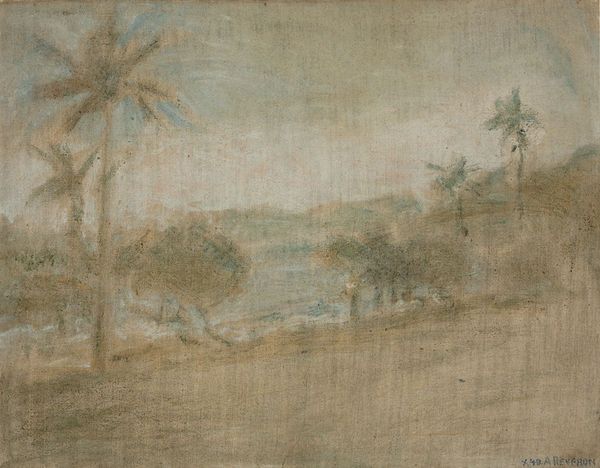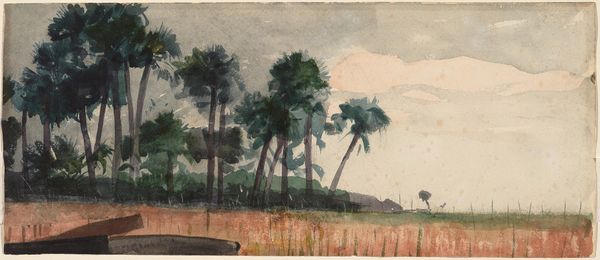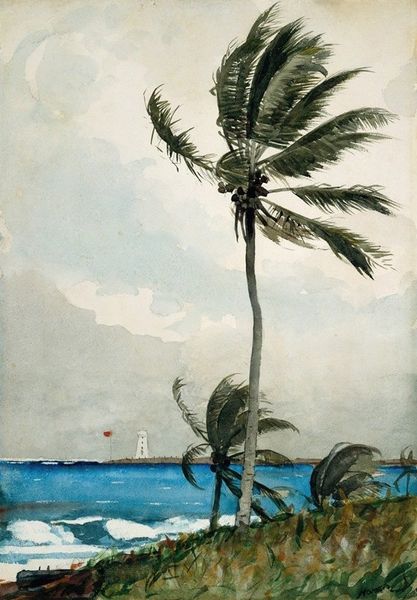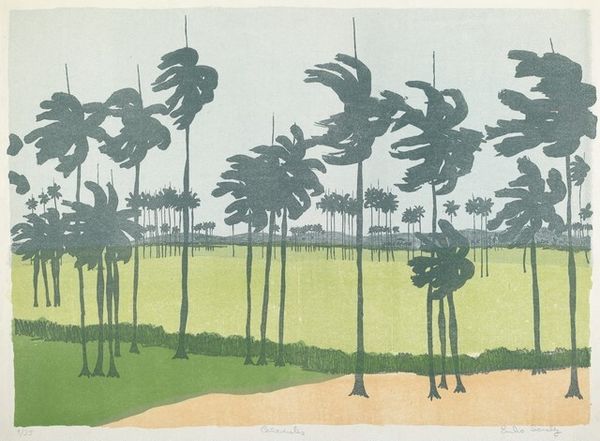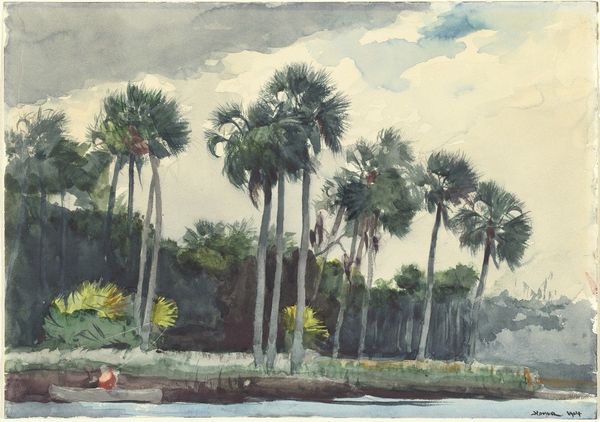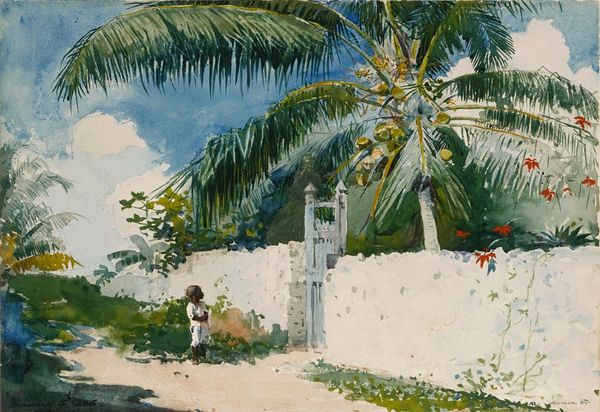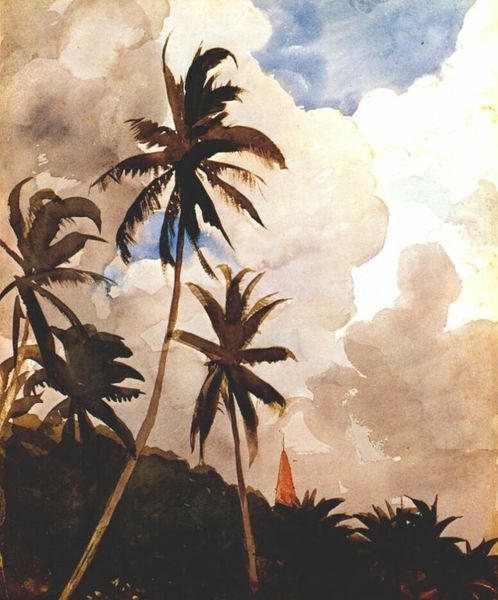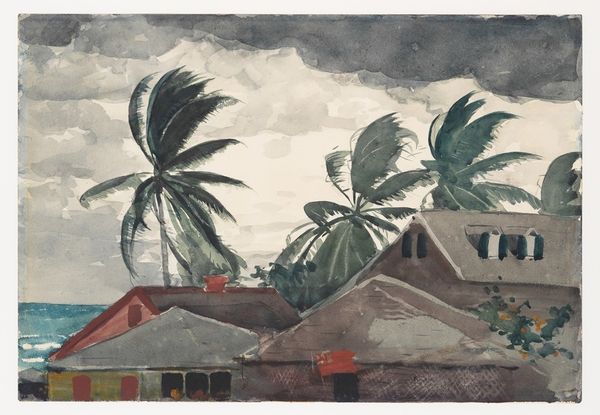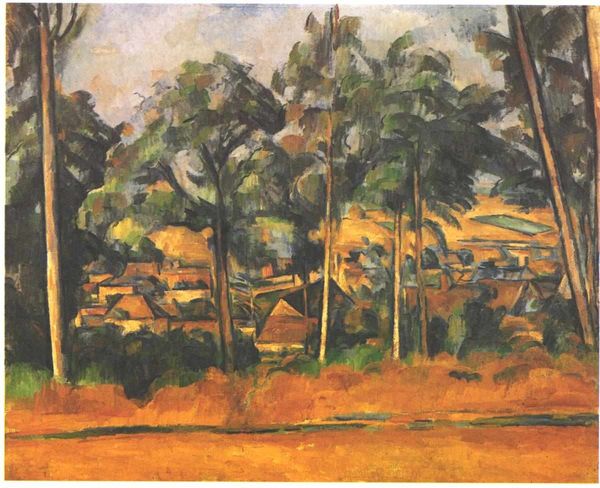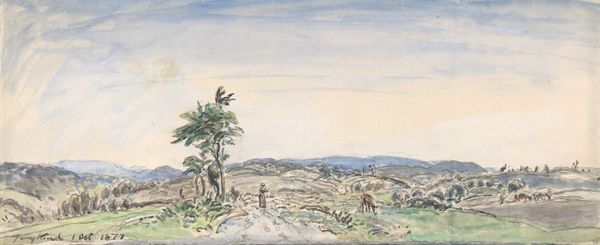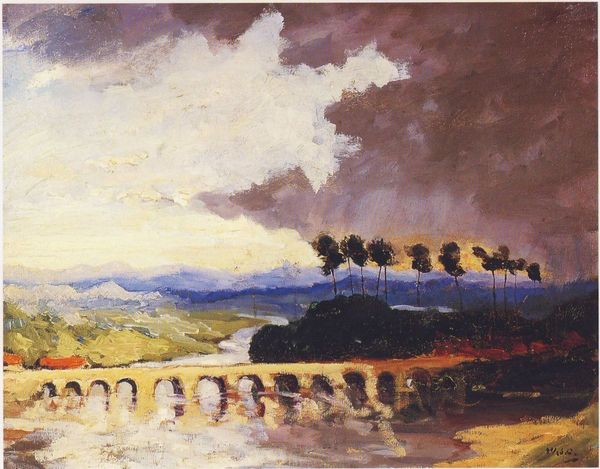
plein-air, watercolor
#
water colours
#
impressionism
#
plein-air
#
landscape
#
watercolor
#
modernism
#
watercolor
Copyright: Public Domain: Artvee
Curator: Winslow Homer’s "Storm, Bahamas," a watercolor created around 1885, certainly grabs your attention, doesn’t it? Editor: Oh, absolutely! The moment I saw it, I felt this immediate sense of foreboding. It's that muted palette, that roiling sky bearing down – it makes you want to run for cover. Curator: It is a striking piece, particularly when you consider Homer's broader engagement with the visual rhetoric surrounding race and place. His work at this time reflects a burgeoning awareness of colonialism through his artistic depictions of labor, landscape, and tourism across the Atlantic. Editor: I see what you mean. I immediately get a sense of nature's raw power—and the palms almost seem to be bowing. It is all the more striking knowing it’s watercolor, it has a transparency but also weight. Was he working en plein air on this? It really feels immediate. Curator: The existing scholarship suggests that Homer completed much of his watercolor work in the open air in his attempt to move away from the rigid academic conventions of the period, but of course, the specific materials matter a great deal, especially considering the challenges presented by that choice. The quality of pigments, paper, and their availability really shapes how these ideas translated. Editor: It makes me wonder about the act of creation. Was it a struggle, a dance? Did he embrace the storm? And you are right, there is definitely a push and pull to it all. There’s also that tiny hut; that provides an interesting contrast as its literally and metaphorically grounded while the winds take everything else. Curator: Indeed, it’s vital to unpack the artistic choices in light of their accessibility and costs. Watercolor allowed him a portability suited for an increasingly mobile artistic practice which in turn also broadened the types of subject matter being deemed valuable. Editor: Right. What appeared in a gallery and where art got made are two parts of the same story. So, now when I step back from it, it feels less like a spontaneous sketch and more like something much more involved. A bit melancholic, but definitely resonant. Curator: Precisely. Homer provides a snapshot not only of a natural scene but an aesthetic and social landscape caught between tradition and the burgeoning realities of a quickly changing world.
Comments
No comments
Be the first to comment and join the conversation on the ultimate creative platform.
